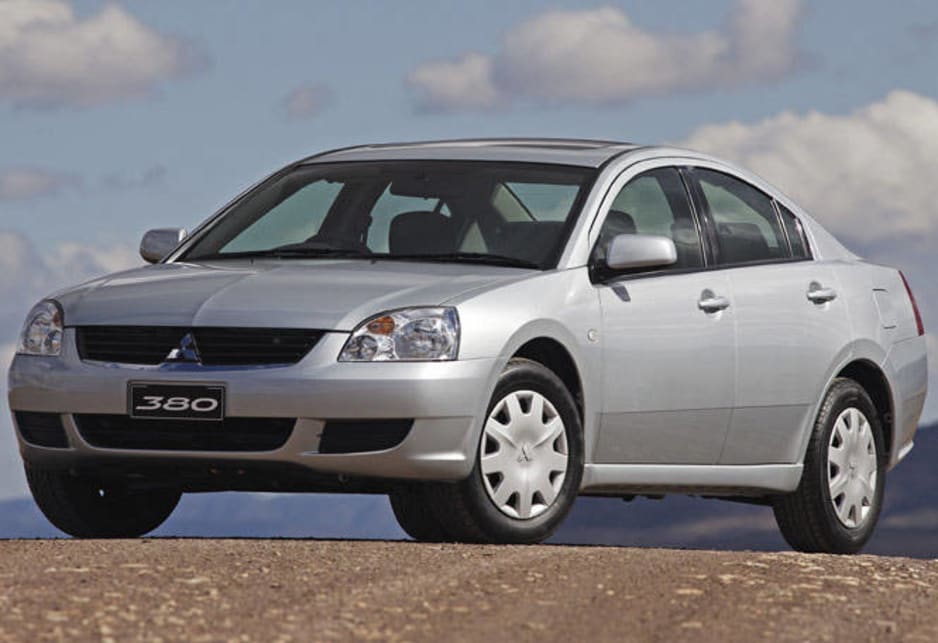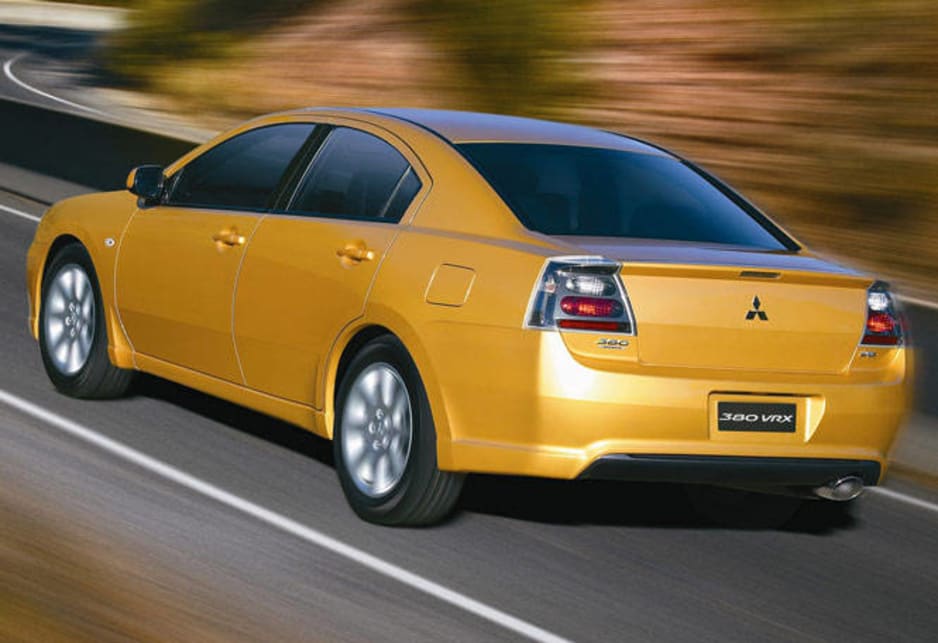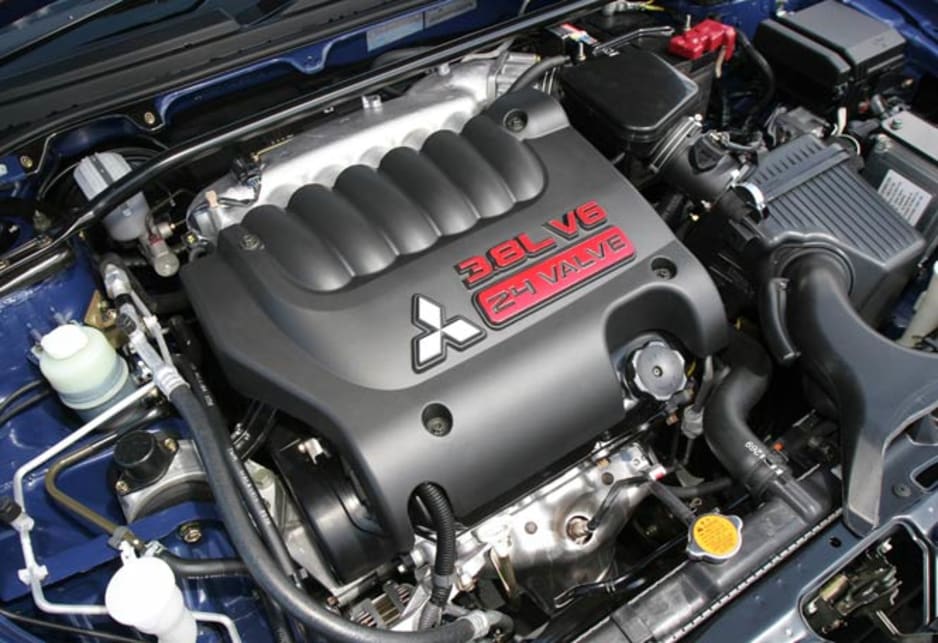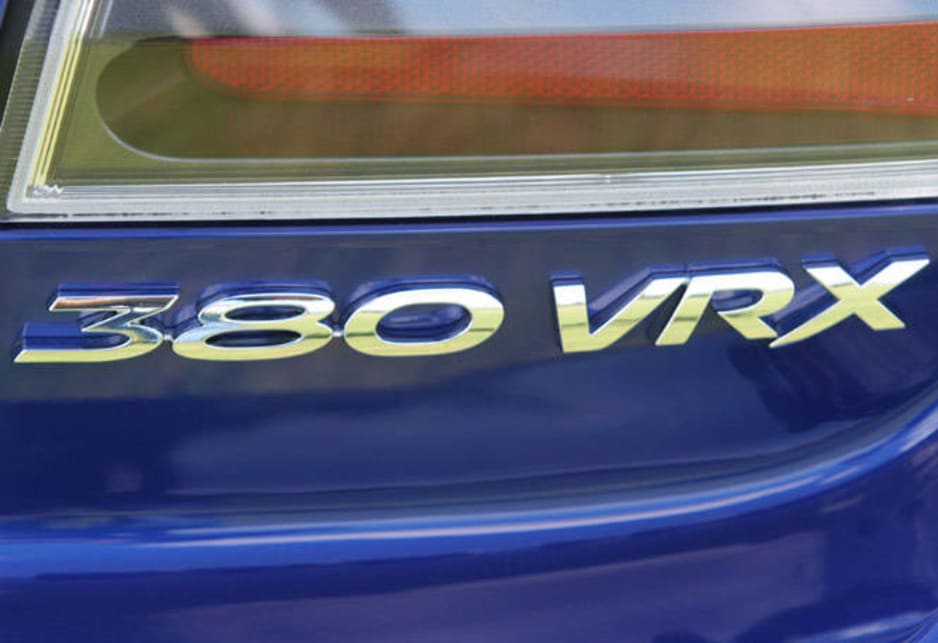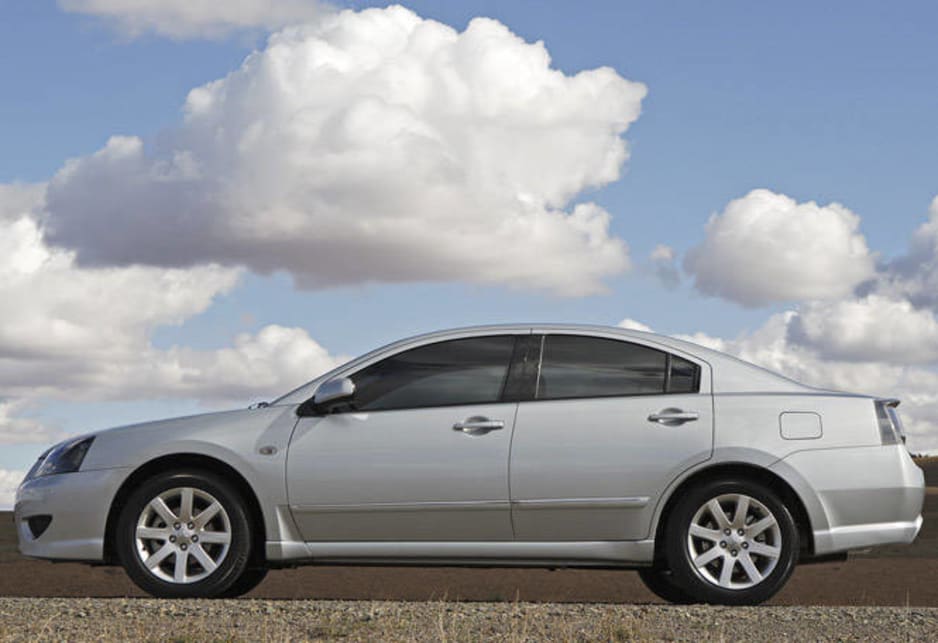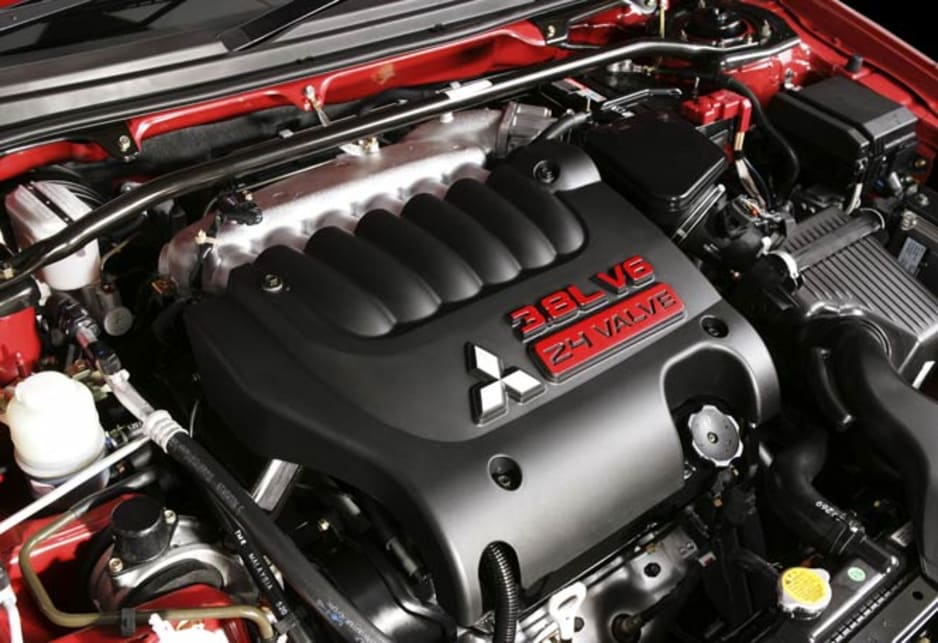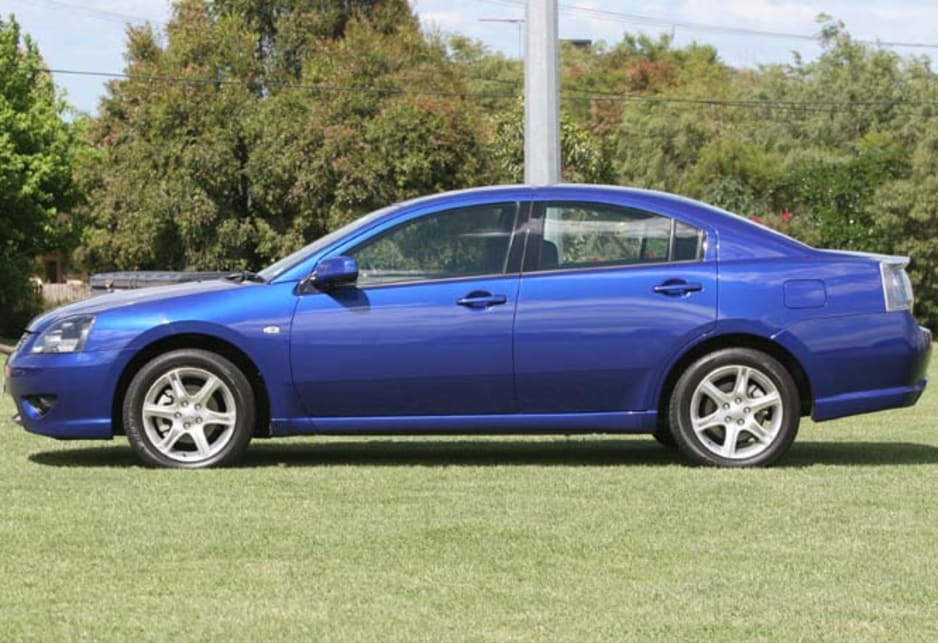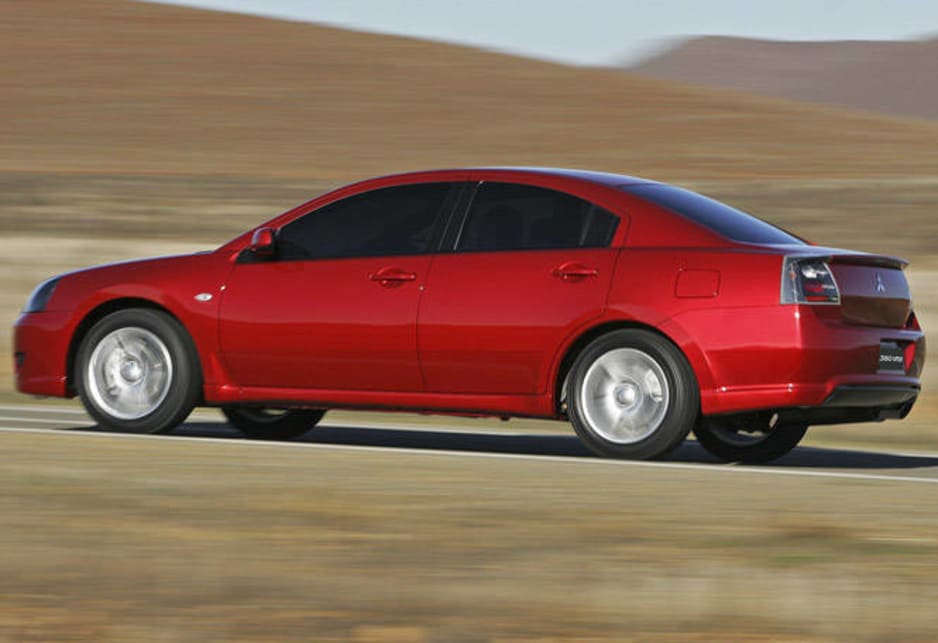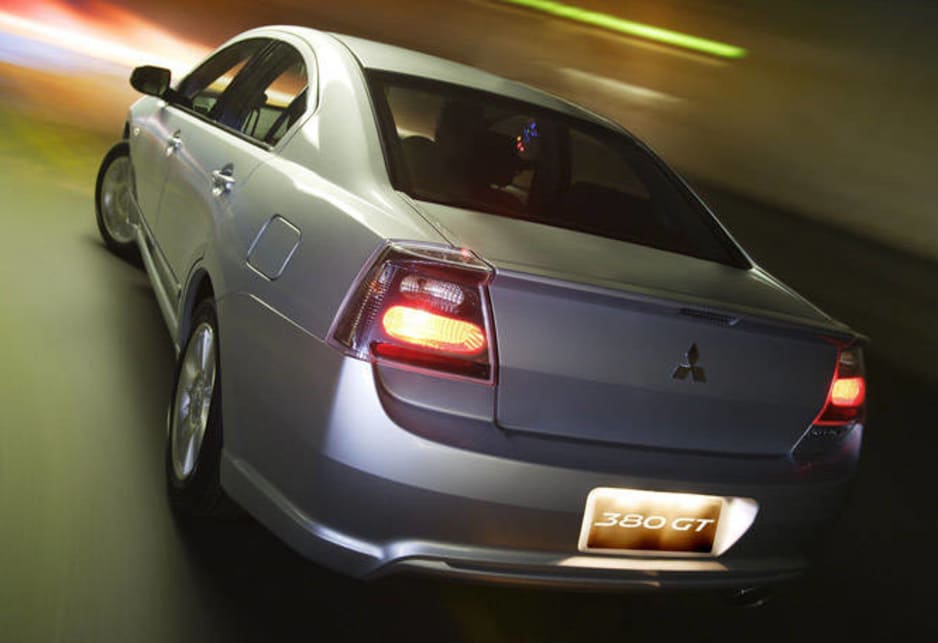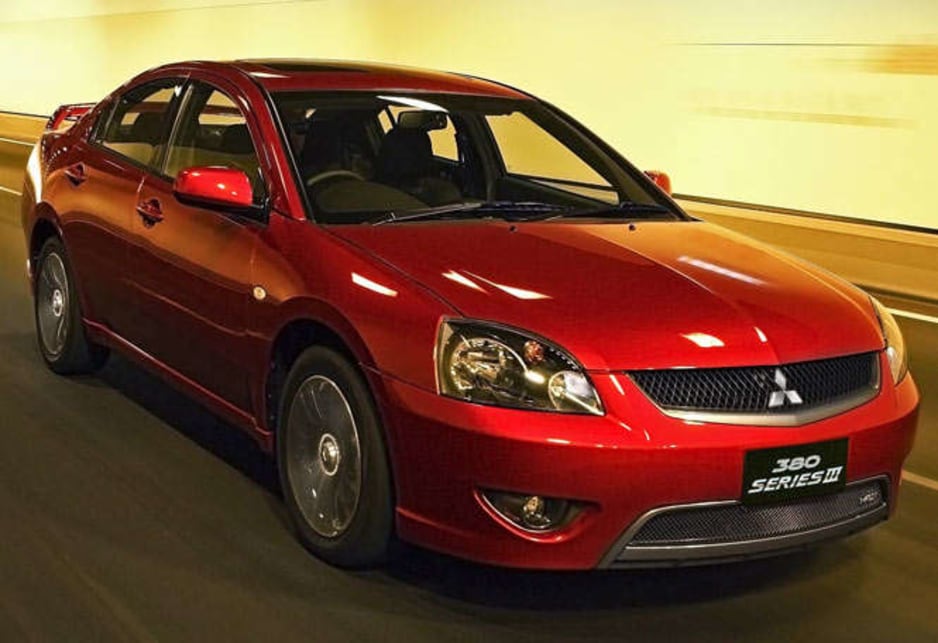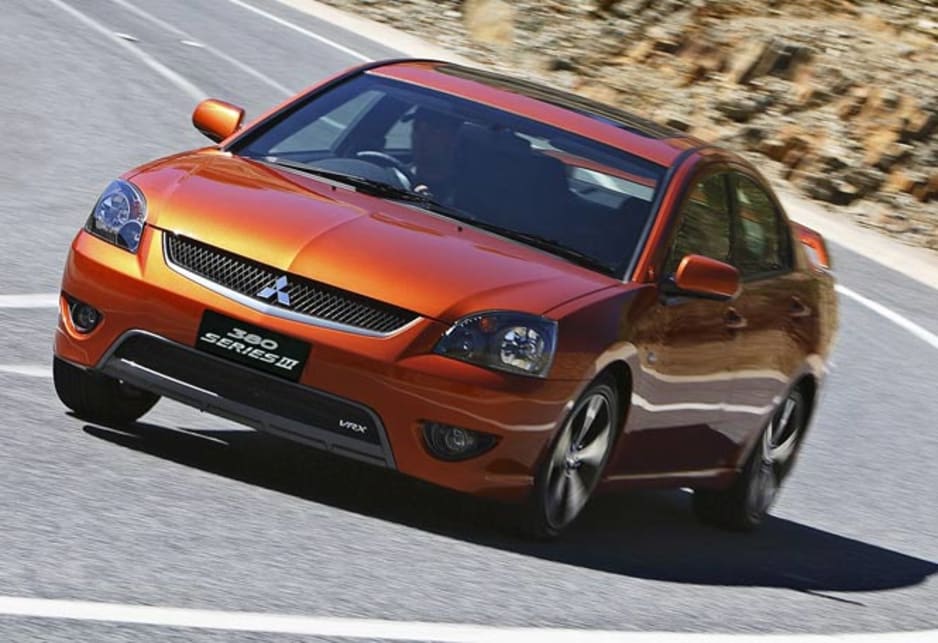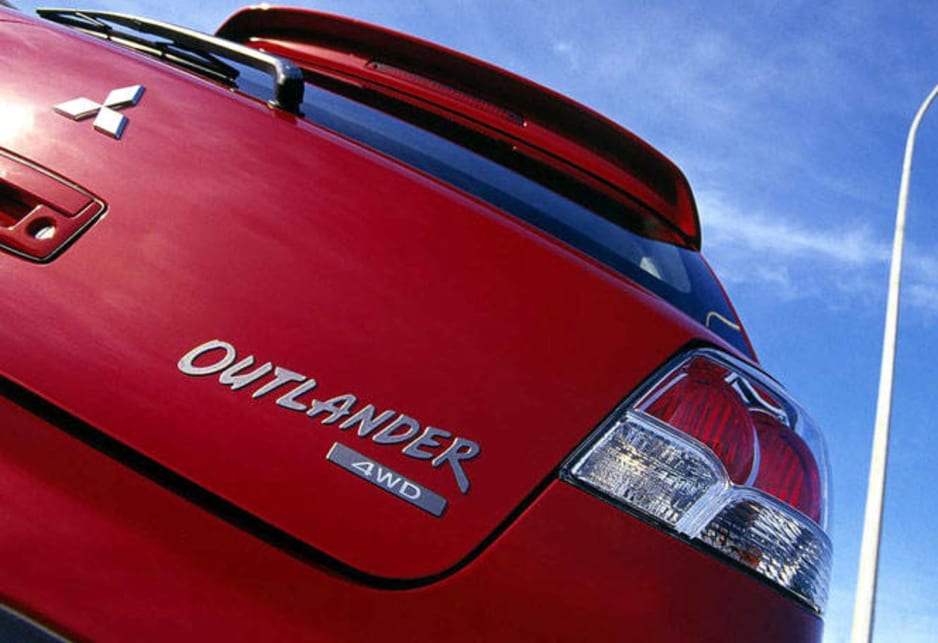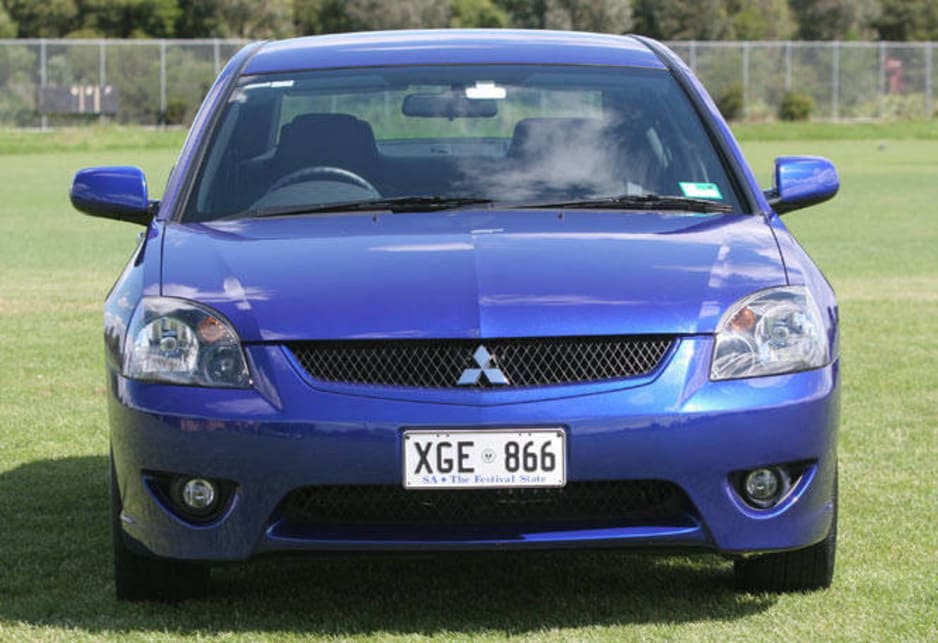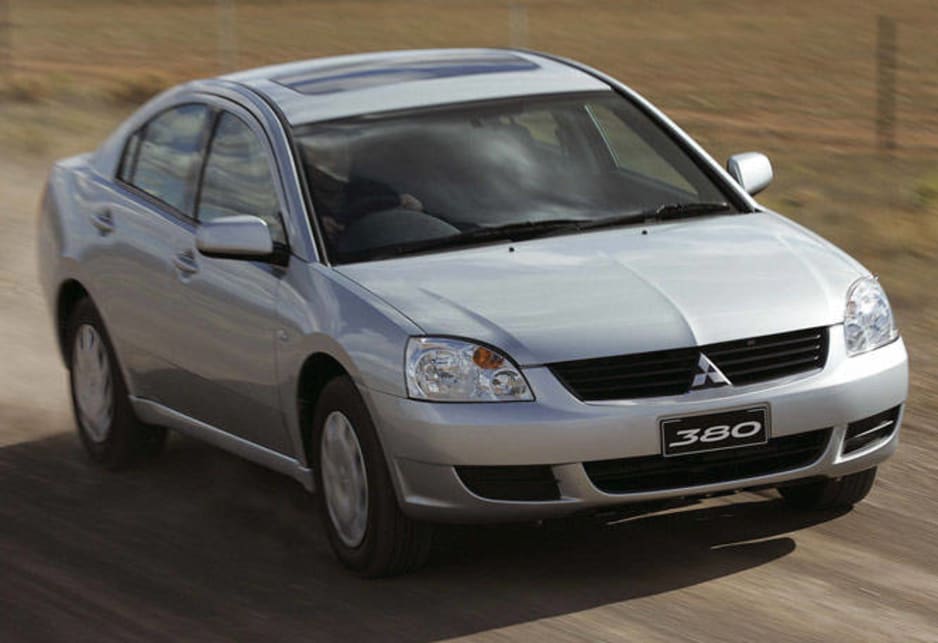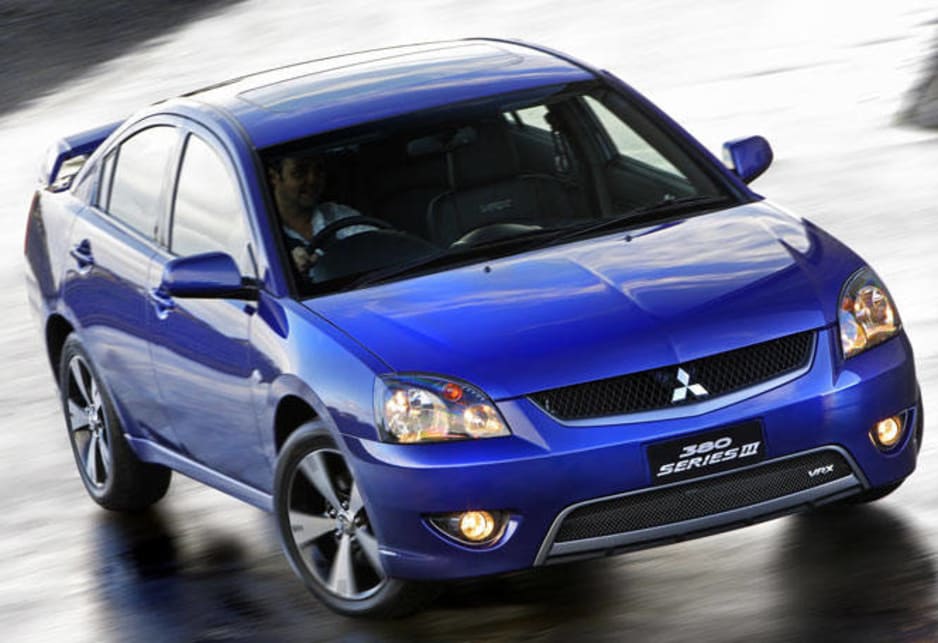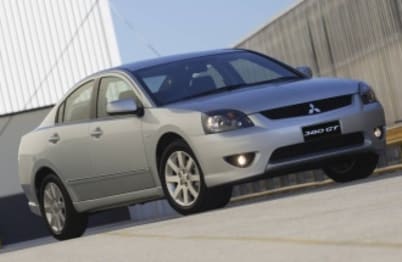
Used Mitsubishi 380 review: 2005-2008
- Mitsubishi 380
- Mitsubishi 380 2005
- Mitsubishi 380 2006
- Mitsubishi 380 2007
- Mitsubishi 380 2008
- Mitsubishi 380 Reviews
- Mitsubishi Reviews
- Mitsubishi Sedan Range
- Sedan
- Mitsubishi
- Used Car Reviews
- Buying tips
What we like
- Cheap used
- Roomy
- Plenty of poke
What we don't
- Thirsty by modern standards
- Auto only
- Bland styling of lesser models
What we like
- Cheap used
- Roomy
- Plenty of poke
What we don't
- Thirsty by modern standards
- Auto only
- Bland styling of lesser models
The demise of the local manufacture of the Mitsubishi 380 was the result of a common ailment within the car industry – belief in your own hype. When sitting down to build the next generation Mitsubishi Magna the marketing people convinced themselves their new car was so much better than the old one that it deserved a new name.
So after over 20 years of building up a great reputation for the Magna the name was dumped and replaced by a number. Mitsubishi 380 was born, staggered along for a few years, then was quietly put to sleep. Thus weakening Australia’s local heavy industry and costing a lot of jobs.
Mitsubishi 380 is an excellent machine that’s well worth considering as a used car. Values have dropped because people get nervous about ‘orphan’ cars, but spare parts are still readily available and there’s no shortage of mechanics who know their way around the Mitsubishi 380.
Though the 380 was based on an American/Japanese Mitsubishi design, many changes were made to suit Australian road conditions, as well as local drivers’ tastes.
Interior room is a big feature of the Mitsubishi 380, with space and comfort both being well above average in the back seat. Access to the rear seat is easy and this is a genuine family machine for those with kids at the hulking-teen stage of their lives. The in-cabin styling is pleasing to the eye and likely to remain timeless.
Handling is good, all the more so when you remember this is a big front-wheel-drive family machine, not a sports sedan. Road grip is high and the car generally feels neutral until it approaches its higher than average on-road limits.
Mitsubishi 380’s 3.8-litre V6 engine is a stretched version of the 3.5-litre unit used in the Magna. There is good torque throughout the rev range and easy-going long-distance travel is a speciality of the car.
Most of the engines sit alongside a five-speed automatic transmission, but Mitsubishi continued to offer a five-speed manual gearbox on some variants.
Disappointing sales right from the start led to the introduction of the Mitsubishi 380 Series 2 only six months after the October 2005 launch of the original model. Prices were slashed, with the range starting $7000 down on the initial models which didn’t do a lot for those who had bought the early cars, but was good news for used-car buyers.
A special model called the Mitsubishi 380 Platinum Edition was launched in October 2006. Based on the Mitsubishi 380 SX, the Platinum came with a powered sunroof, rear park assist, a rear spoiler and Bluetooth connectivity. It could be identified by its platinum-coloured radiator grilles and rear bumper insert, as well as by ‘Platinum’ badges.
The simple underbonnet layout and good access mean you can do a fair bit of your own service and repair work. As always, we suggest you leave safety items to professionals, and have a workshop manual to study before commencing work.
Insurance costs are generally in the lower quarter of the scale. We have seen some companies charge extra for the Mitsubishi 380 GT compared with the standard model. This perhaps reflects on the type of buyers attracted to the car, but remember there's no additional engine performance compared with the standard 380.
WHAT TO LOOK FOR
Some 380s will have begun their days on car rental fleets and could have had a rough life. Look for signs of damage to seats, carpets and other trim caused by careless use. Don't forget to check the boot as well as the cabin.
Examine the top of the dash panel and the rear parcel shelf for faded, or cracked, plastic caused by constant exposure to sunlight.
Look and feel the front tyres for uneven wear, this could mean front suspension problems, or it might simply be that a wheel has been bumped out of alignment. Play it safe if there's the slightest doubt.
Be sure the engine starts quickly and idles smoothly within a few seconds of kicking over.
Look for smoking at the exhaust, especially after the engine is worked hard after it has been idling for a while.
Automatic transmission problems that plagued the Magna for many years don’t seem to have carried across to the new 380. However, watch for an automatic that shifts gear when it doesn’t need to, or which suddenly shifts into neutral for no reason.
Make sure the brakes pull the car up in a straight line and that the ABS system sends a pulsing through the pedal on very hard braking. Don’t forget to check your mirrors before doing these tests.
Rust is not normally a problem but a car that's been poorly repaired after a crash could have some troubles. If you do suspect a major crash has been rectified it pays to have a professional completely inspect the car.
CAR BUYING TIP
Before buying an older car it’s wise to chat to specialists in your area about their knowledge of the car type, as well as the availability of spare parts.
Pricing
| Year | Price From | Price To |
|---|---|---|
| 2008 | $3,850 | $8,360 |
| 2007 | $2,420 | $7,370 |
| 2006 | $2,420 | $6,930 |
| 2005 | $2,860 | $6,380 |
Pricing guides
Range and Specs
| Vehicle | Specs | Price* | |
|---|---|---|---|
| LS | 3.8L, ULP, 5 SP AUTO | $3,410 – 5,390 | 2005 Mitsubishi 380 2005 LS Pricing and Specs |
| (base) | 3.8L, ULP, 5 SP MAN | $2,860 – 4,510 | 2005 Mitsubishi 380 2005 (base) Pricing and Specs |
| LX | 3.8L, ULP, 5 SP AUTO | $4,180 – 6,160 | 2005 Mitsubishi 380 2005 LX Pricing and Specs |
| VR-X | 3.8L, ULP, 5 SP AUTO | $4,180 – 6,160 | 2005 Mitsubishi 380 2005 VR-X Pricing and Specs |
$3,080
Lowest price, based on third party pricing data


